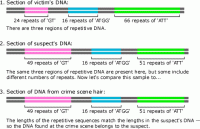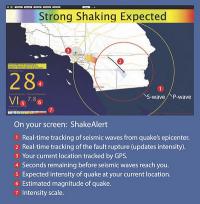-
Fighting fire with research results
Every year, devastating forest fires take place in Europe and around the world, destroying thousands of hectares of forests and severely impacting citizens and the environment. EU-funded research teams, mindful of the current and future risks, have been focusing their efforts on developing systems and tools that can help avert disaster.
-
-
Berkeley modifies Suspicious Activity Reports guidelines
The Berkeley City Council members said in a meeting last week that Suspicious Activity Reports (SARs), an initiative of the DHS which, through regional and national agencies, disseminates to local law enforcement information on possible terrorist threats, has the potential of criminalizing innocent people. Members of the council agreed that in order to prevent hurting innocent people, the council should adopt a Police Review Commission recommendation to modify Berkeley Police Department orders on Suspicious Activity Reporting. The modification aims to make sure that SARs can be filed “only if there is reasonable suspicion that the individual is involved in criminal conduct.”
-
-
U.K., U.S. responds differently to Snowden’s revelations about domestic surveillance
Legal analysts note that the United States and the United Kingdom have responded differently to the Snowden revelations. While in the United States steps have been taken to limit the NSA’s domestic surveillance powers, the United Kingdom is going in the other direction. The British government on Wednesday published draft legislation on surveillance and investigative powers – a legislation which is the government’s response to the documents leaked by Snowden. The U.K.’s draft bill not only embeds bulk data collection in law, but it enhances the surveillance and investigative powers of law enforcement and intelligence agencies.
-
-
DNA identification may not be as reliable as previously thought

Increasingly important to criminal investigations, DNA analysis once required substantial samples of blood or other bodily fluids, but advances in the field now make it possible to produce a complete genetic profile of a suspect from just a few cells left behind — so-called “touch DNA.” A new study shows that secondary transfer of human DNA through intermediary contact is far more common than previously thought, a finding that could have serious repercussions for medical science and the criminal justice system.
-
-
West Coast lawmakers ask Obama for $16.1 million to complete earthquake early warning system

Last Wednesday thirty-six Members of Congress from western states urged President Barack Obama and the White House’s Office of Management and Budget to increase the funding level for earthquake hazards programs in their 2017 budget request — more specifically, to provide $16.1 million dollars in funding for an on-shore Earthquake Early Warning System (EEW) being developed by scientists in Southern California and along the West Coast. The lawmakers say that such an early warning system would be helpful in providing residents and first responders with advance notice that could help save lives, avoid injuries, and avert major infrastructure damage by slowing trains to prevent derailment, stopping elevators, pausing surgeries, and taking other actions in the event of a major earthquake.
-
-
Climate change heightening the risk of conflict and war
Thirty of Australia’s leading minds from defense, academia, policy think tanks, and other government agencies have joined together for discussions over two days last week for Australia’s first climate security summit. The summit participants agreed that increasing temperatures, rising sea levels, changing rainfall patterns, and more frequent and severe extreme weather events are heightening the risk of conflict and increasing the displacement of people. The summit organizers quote Brigadier-General Wendell Christopher King (Ret.), the Chief Academic Officer at the U.S. Army’s Command and General Staff College, who said: “[Climate change] is like getting embroiled in a war that lasts 100 years — there is no exit-strategy.”
-
-
U.K. surveillance bill debate: Judicial warrants vs. ministerial authorization for intercepts
Former Conservative shadow home secretary David Davis has said that the plans to grant police and intelligence agencies new powers to monitor suspects online will not get through parliament without a requirement for judges to sign off on spying warrants. A legal report written at the request of Home Secretary Theresa May recommended that judicial warrant rather than a ministerial authorization be required for intercepting individuals’ communications. Parliament’s Intelligence and Security Committee, however, recommended in March that ministerial authorization would be preferable. A draft of a new investigatory powers bill will be published Wednesday, and May said she would “be explaining the government’s position to parliament this week.”
-
-
Legislation would give U.K. police powers to access U.K. computer users’ browsing history
The U.K. police and intelligence service, ahead of the publication this coming Wednesday of legislation on regulating surveillance powers, have urged the government to give them the power to view the Internet browsing history of British computer users. Senior officers were pressuring the government to revive measures which would require telecommunications companies to retain for twelve months data which would reveal Web sites visited by customers. The police and intelligence agencies argue that such measures are necessary because the scale of online activity has made traditional methods of surveillance and investigation less useful.
-
-
IRS commissioner confirms agency employs cellphone tracking devices

IRS commissioner John Koskinen on Tuesday confirmed to lawmakers that his agency employed StingRay cellphone tracking devices. Koskinen said that the agency’s use of StingRay devices is limited to its criminal investigations division, which is responsible of investigating money laundering, terrorism, and organized crime cases. “It can only be used with a court order. It can only be used based on probable cause of criminal activity,” Koskinen said, the Hill reports. “It is not used in civil matters at all,” he continued. “It’s not used by other employees of the IRS.”
-
-
Online residential fire simulation tool for training firefighters
Firefighting is not what it used to be. Whether it is a complex blaze raging in an urban high-rise or a seemingly straightforward single-level home fire, modern building construction and furnishings have made fighting fires more difficult: Flames burn hotter, produce more smoke, and spread more quickly. But fire research has advanced, too, and researchers are working with five major urban fire departments to build new knowledge on modern residential firefighting into game-based online simulations with an engaging, dynamic format.
-
-
Steam thermography may compete with luminol in solving crimes
Luminol gets trotted out pretty frequently on TV crime shows, but a new technique might someday compete with the storied forensics tool as a police procedural plot device and, perhaps more importantly, as a means of solving real crimes. Researchers developed what they term “steam thermography,” which has the ability to detect blood spots in all kinds of spots — even in spots where luminol cannot.
-
-
Ruling shows Europe still vexed over NSA spying, leaving U.S. companies in legal limbo
For over fifteen years, the Data Transfer Pact between the European Union and the United States, more commonly known as Safe Harbor, had ensured that companies with EU operations could transfer online data about their employees and customers back to the United States despite stark differences between U.S. and European privacy law. Earlier this month, U.S. companies operating in Europe got some unwelcome news: Safe Harbor had been ruled invalid. The European court’s ruling has serious implications for these companies’ business models and profitability, leaving many scrambling to find solutions. But it also exposes a fundamental cultural rift between the U.S. and Europe’s conceptions of privacy – one that a new agreement won’t be able to paper over.
-
-
Design competitions needed to maintain U.S. nuclear deterrent
Preserving the U.S. nuclear weapon design skills is essential for sustaining a credible nuclear deterrent, understanding the status and direction of foreign nuclear weapons programs, and determining the best solutions to problems that arise during stockpile surveillance and maintenance. In the absence of nuclear explosion testing, the National Nuclear Security Administration (NNSA) should develop a series of design competitions that integrate the full end-to-end design process from novel design conception through production and non-nuclear testing of an engineered prototype, says a new report.
-
-
W80-4: Sandia California works on nuclear weapon Life Extension Program
Sandia National Laboratories is doing what it has not done in decades: extending the life of a nuclear warhead at the same time the U.S. Air Force develops a replacement cruise missile that will carry the weapon. The goal of the W80-4 Life Extension Program (LEP) is refurbishing the W80 warhead with replacement components for aging technology and components that have limited lifespans.
-
-
Glowing fingerprints help fight crime
Fingerprint identification has been used as a key method by law enforcement and forensic experts for over 100 years. Researchers say that by adding a drop of liquid containing crystals to surfaces, investigators using a UV light are able to see invisible fingerprints “glow” in about thirty seconds. The strong luminescent effect creates greater contrast between the latent print and surface enabling higher resolution images to be taken for easier and more precise analyses.
-
More headlines
The long view
Factories First: Winning the Drone War Before It Starts
Wars are won by factories before they are won on the battlefield,Martin C. Feldmann writes, noting that the United States lacks the manufacturing depth for the coming drone age. Rectifying this situation “will take far more than procurement tweaks,” Feldmann writes. “It demands a national-level, wartime-scale industrial mobilization.”
How Male Grievance Fuels Radicalization and Extremist Violence
Social extremism is evolving in reach and form. While traditional racial supremacy ideologies remain, contemporary movements are now often fueled by something more personal and emotionally resonant: male grievance.
The Surprising Reasons Floods and Other Disasters Are Deadlier at Night
It’s not just that it’s dark and people are asleep. Urban sprawl, confirmation bias, and other factors can play a role.
Why Flash Flood Warnings Will Continue to Go Unheeded
Experts say local education and community support are key to conveying risk.
